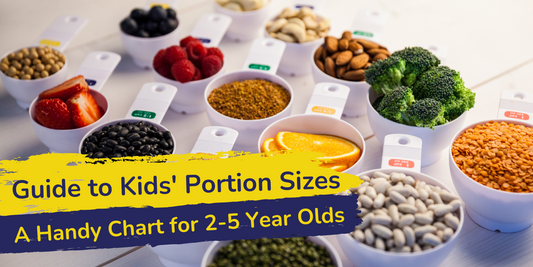
20 Simple Tips to Encourage Healthy Eating Habits in Toddlers
Feeding toddlers can often feel like a challenging task. From picky eating habits to unpredictable appetites, parents frequently find themselves wondering how to encourage healthier food choices for their little ones. Establishing healthy eating habits during early childhood is vital as it lays the foundation for long-term well-being, influencing a child’s relationship with food throughout their life.
Brief Overview of Toddler Eating Problems
Toddlers are naturally curious and energetic, yet their eating habits can sometimes be erratic. Common issues include:
• Refusal to try new foods
• Overindulgence in sweets or processed snacks
• Eating too little or too much
By addressing these concerns early and fostering positive eating behaviors, parents can guide their toddlers toward a balanced diet and lifelong healthy habits.
Importance of Shaping Healthy Eating Behaviors Early
Healthy eating habits formed during the toddler years are crucial for proper growth and development. Toddlers experience rapid physical and cognitive growth, requiring a balanced intake of nutrients to support these changes. Encouraging variety and moderation helps children gain essential vitamins, minerals, and energy to fuel their active lifestyles.
Furthermore, early exposure to nutritious foods shapes their taste preferences and eating patterns, reducing the likelihood of developing unhealthy habits such as reliance on processed or sugary snacks. A strong foundation in healthy eating also decreases the risk of obesity, diabetes, and other diet-related illnesses later in life.
Parents play a pivotal role in creating positive food experiences. By fostering an environment where nutritious foods are celebrated and meals are associated with enjoyment, children develop a lifelong appreciation for healthy eating. Teaching toddlers to listen to their hunger cues and make mindful food choices sets the stage for a healthier future, both physically and mentally.
15 Ways to Incorporate Healthy Eating in Kids
1. Set the Standard with Your Own Eating Habits
Children learn by example. Show them what a balanced meal looks like by making healthy food choices yourself. Eating together can inspire them to try what you’re eating.
2. Refrain from Rewarding with Food
Using sweets or snacks as a reward can create unhealthy associations with food. Instead, use praise or non-food rewards like stickers.
3. Say No to Junk Food Habits
Keep junk food out of reach and make it a rare treat rather than a regular option. Offer healthy alternatives like baked chips, fruit, or yogurt. For more ideas, check out our blog post on Healthy Snack Swaps to Replace Junk Foods where you can explore creative and nutritious options to replace common junk foods.
4. Serve Food in Modest Portions
Encourage toddlers to listen to their hunger cues by offering small portions. They can always ask for more if they’re still hungry.
5. Foster a Positive Eating Environment
Avoid distractions like TV or toys at the dining table. A calm and focused environment helps children enjoy their meals and develop mindful eating habits.
6. Don’t Abandon New Foods Quickly
It may take several attempts before a child accepts a new food. Be patient and keep introducing it in different ways.
7. Limit Sugary Drinks and Snacks
Swap sugary drinks with water or milk. Replace sugary snacks with naturally sweet options like fruits or homemade smoothies.
8. Make Family Meals a Priority
Sitting down as a family promotes healthy eating habits and provides an opportunity to model good behavior.
9. Set Consistent Meal Times
Consistency is key. Eating meals and snacks at the same time every day helps regulate a child’s appetite and reduces unhealthy snacking.
10. Choose Whole and Minimally Processed Foods
Offer whole grains, fresh fruits, and vegetables instead of processed foods. Opt for homemade meals whenever possible.
11. Turn Eating Healthy into a Fun Activity
Make mealtime engaging and exciting: DIY Veggie Faces: Create funny faces on toast using veggies like cucumber, bell peppers, and cherry tomatoes. Rainbow Plates: Challenge your toddler to eat foods of different colors. Cooking Together: Let them help in the kitchen with age-appropriate tasks like stirring or arranging toppings.
12. Plan Your Meals in Advance
Pre-planned meals reduce the likelihood of resorting to unhealthy options. Keep nutritious snacks ready for quick access.
13. Incorporate Good Fats into Meals
Include sources of healthy fats like avocado, nuts, and olive oil to support brain development and overall health.
14. Teach Children to Understand Their Hunger
Encourage toddlers to recognize when they are hungry or full. Avoid pressuring them to clean their plate.
15. Speak Positively About Food Choices
Avoid labeling foods as “good” or “bad.” Instead, talk about how certain foods help their body grow strong and healthy.
10 Toddler-Friendly Recipes for Building Healthy Eating Habits
1. Banana Oat Pancakes

Ingredients: Ripe bananas, rolled oats, eggs, and cinnamon.
Method: Blend all ingredients, cook on a skillet, and serve with fruit.
Healthy Habit: Encourages using natural sweetness from fruits instead of sugar.
2. Veggie Muffins

Ingredients: Grated zucchini, carrots, whole wheat flour, eggs, and cheese.
Method: Mix, bake, and enjoy as a snack or breakfast.
Healthy Habit: Incorporates vegetables in a fun and tasty way.
3. Fruit Smoothie Bowls

4. Mini Veggie Wraps

5. Sweet Potato Fries

6. Homemade Granola Bars

7. Rainbow Veggie Skewers

8. Avocado Toast

9. Apple Nachos

10. Yogurt Popsicles









